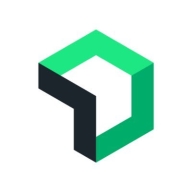

Splunk Observability Cloud and New Relic compete in the observability space. Splunk has an edge with its logging capabilities and real-time data processing, while New Relic offers strong application performance monitoring and detailed insights.
Features: Splunk Observability Cloud excels with extensive logging, real-time data processing, and strong application performance monitoring solutions for cloud-native applications. It adapts to various environments and integrates well. New Relic offers real-time application performance monitoring, error rate tracking, and robust transaction tracing. It provides detailed insights into application performance and customer experience.
Room for Improvement: Splunk Observability Cloud needs better integration with third-party applications, improved automation, and scalability enhancements. Users find its setup complex and licensing expensive. New Relic's user interface could be more intuitive, and its pricing structure simpler. Users look for better dashboard customization and alert configuration.
Ease of Deployment and Customer Service: Splunk Observability Cloud supports deployments on-premises and in private and public clouds. Customer service feedback varies, with calls for faster response times and proactive measures. New Relic mainly deploys on public clouds and garners praise for responsive technical support. It is easy to deploy, but documentation for beginners could improve.
Pricing and ROI: Splunk Observability Cloud has high costs linked to data volume, which some consider justified by its capabilities and operational efficiency gains. New Relic's pricing is per user, leading to quick cost increases, but the insights and performance improvements provide good ROI. Both products offer significant ROI in monitoring capabilities, although pricing is a concern for buyers.
Using Splunk has saved my organization about 30% of our budget compared to using multiple different monitoring products.
Anyone working in front-end management should recognize the market price to see the true value of end-user monitoring.
I have definitely seen a return on investment with Splunk Observability Cloud, particularly through how fast it has grown and how comfortable other teams are in relying on its outputs for monitoring and observability.
Issues that could be solved quickly sometimes take longer because they go around in circles.
On a scale of 1 to 10, the customer service and technical support deserve a 10.
They have consistently helped us resolve any issues we've encountered.
They often require multiple questions, with five or six emails to get a response.
We've used the solution across more than 250 people, including engineers.
As we are a growing company transitioning all our applications to the cloud, and with the increasing number of cloud-native applications, Splunk Observability Cloud will help us achieve digital resiliency and reduce our mean time to resolution.
I would rate its scalability a nine out of ten.
I would rate its stability a nine out of ten.
We rarely have problems accessing the dashboard or the page.
Unlike NetScout or regular agents for APM, RUM has many problems during the POC phase because customer environments vary widely.
Email alert customization is limited; it cannot be tailored much, which makes the system more rigid than optimal.
The out-of-the-box customizable dashboards in Splunk Observability Cloud are very effective in showcasing IT performance to business leaders.
The next release of Splunk Observability Cloud should include a feature that makes it so that when looking at charts and dashboards, and also looking at one environment regardless of the product feature that you're in, APM, infrastructure, RUM, the environment that is chosen in the first location when you sign into Splunk Observability Cloud needs to stay persistent all the way through.
There is room for improvement in the alerting system, which is complicated and has less documentation available.
Splunk is a bit expensive since it charges based on the indexing rate of data.
It is expensive, especially when there are other vendors that offer something similar for much cheaper.
It appears to be expensive compared to competitors.
Using New Relic speeds up troubleshooting and resolution, giving us a clearer picture of where issues are, thus saving time and effort.
Splunk provides advanced notifications of roadblocks in the application, which helps us to improve and avoid impacts during high-volume days.
For troubleshooting, we can detect problems in seconds, which is particularly helpful for digital teams.
It offers unified visibility for logs, metrics, and traces.
| Product | Market Share (%) |
|---|---|
| New Relic | 5.1% |
| Splunk Observability Cloud | 1.9% |
| Other | 93.0% |


| Company Size | Count |
|---|---|
| Small Business | 65 |
| Midsize Enterprise | 49 |
| Large Enterprise | 60 |
| Company Size | Count |
|---|---|
| Small Business | 19 |
| Midsize Enterprise | 10 |
| Large Enterprise | 44 |
New Relic offers real-time application monitoring and insight into performance bottlenecks. Its customizable dashboards and APM integration provide efficient operational support, while server performance alerts ensure quick issue detection.
New Relic provides comprehensive monitoring of application performance, tracking bottlenecks across databases and front-end components. Users employ it for server and infrastructure monitoring, as well as analyzing key metrics such as CPU and memory usage. The solution's ability to integrate with tools like PagerDuty enhances incident management capabilities. However, users have expressed a need for improvements in query language simplicity, more detailed historical insights, and better mobile app monitoring support.
What are New Relic's most important features?In industries like e-commerce and financial services, New Relic supports application performance monitoring to enhance user experience and system reliability. Organizations leverage its insights for optimizing performance, particularly in server operations and infrastructure management. Its ability to monitor API failures through synthetic monitoring is crucial for maintaining high service levels.
Splunk Observability Cloud offers sophisticated log searching, data integration, and customizable dashboards. With rapid deployment and ease of use, this cloud service enhances monitoring capabilities across IT infrastructures for comprehensive end-to-end visibility.
Focused on enhancing performance management and security, Splunk Observability Cloud supports environments through its data visualization and analysis tools. Users appreciate its robust application performance monitoring and troubleshooting insights. However, improvements in integrations, interface customization, scalability, and automation are needed. Users find value in its capabilities for infrastructure and network monitoring, as well as log analytics, albeit cost considerations and better documentation are desired. Enhancements in real-time monitoring and network protection are also noted as areas for development.
What are the key features?In industries, Splunk Observability Cloud is implemented for security management by analyzing logs from detection systems, offering real-time alerts and troubleshooting for cloud-native applications. It is leveraged for machine data analysis, improving infrastructure visibility and supporting network and application performance management efforts.
We monitor all Application Performance Monitoring (APM) and Observability reviews to prevent fraudulent reviews and keep review quality high. We do not post reviews by company employees or direct competitors. We validate each review for authenticity via cross-reference with LinkedIn, and personal follow-up with the reviewer when necessary.